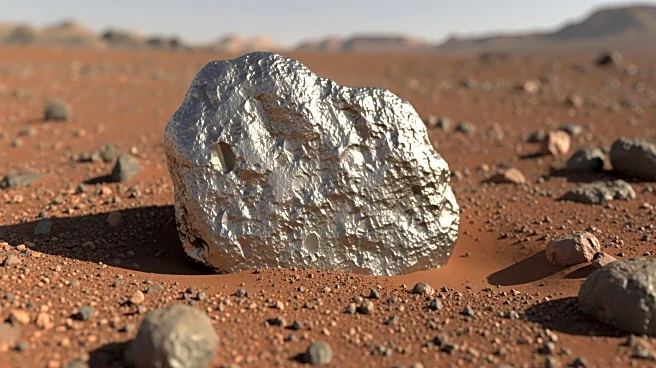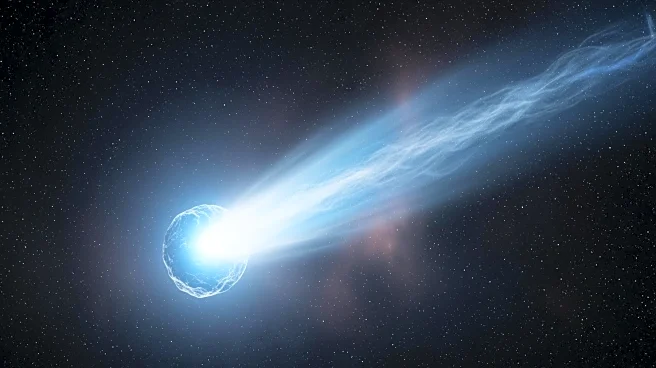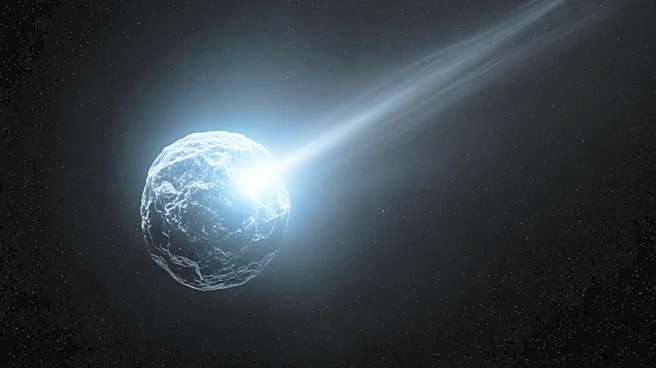What's Happening?
Recent data visualization highlights that Jupiter's moon Ganymede contains more water than any other object in the solar system, with an estimated 11.4 billion km³ in its subsurface ocean. This discovery,
along with findings about other icy moons like Europa and Titan, challenges the perception of Earth as the 'blue planet.' These moons possess hidden oceans beneath their icy crusts, reshaping scientific understanding of potential life-supporting environments beyond Earth. The data, sourced from USGS, NASA's Ocean Worlds program, and various planetary missions, underscores the abundance of extraterrestrial water, which is central to astrobiological research. Missions such as Europa Clipper and Dragonfly are being developed to explore these alien seas further.
Why It's Important?
The presence of vast water reserves on moons like Ganymede, Europa, and Titan has significant implications for astrobiology and the search for extraterrestrial life. Water is a key indicator of potential habitability, making these moons high-priority targets for exploration. Understanding the distribution and volume of water in the solar system can redefine the criteria for life-supporting conditions, potentially expanding the habitable zone concept. This research could lead to breakthroughs in identifying life beyond Earth, influencing future space missions and scientific priorities.
What's Next?
Future missions, including NASA's Europa Clipper and Dragonfly, aim to investigate these moons further, focusing on their subsurface oceans and potential for life. These missions will employ advanced techniques like ice-penetrating radar and spectroscopy to gather more data. The findings could inform the development of new technologies for detecting water on exoplanets, enhancing the search for habitable worlds beyond our solar system.
Beyond the Headlines
The discovery of extensive water volumes on distant moons challenges traditional views of planetary habitability, suggesting that life-supporting conditions may exist far from the sun's habitable zone. This could lead to a paradigm shift in astrobiology, prompting scientists to reconsider the factors that make a planet or moon suitable for life. The research also highlights the importance of international collaboration in space exploration, as understanding these extraterrestrial environments requires a concerted effort from multiple space agencies.











